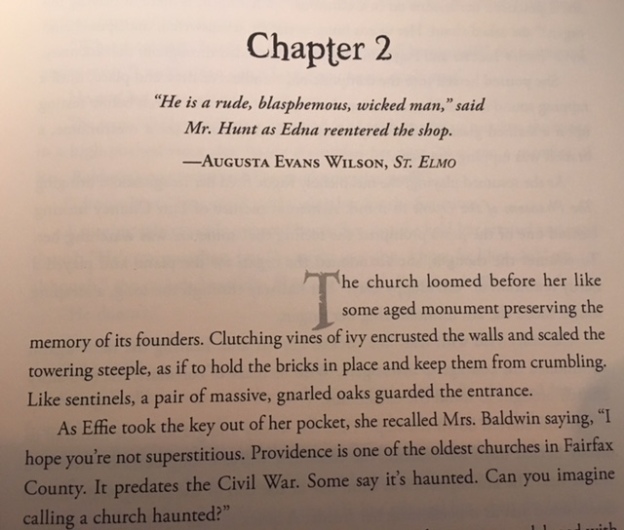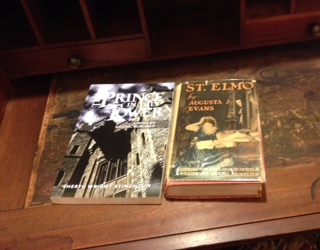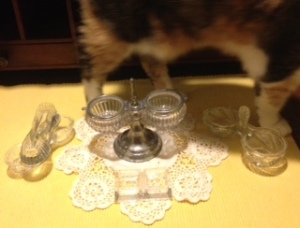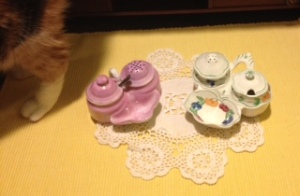The theme of THE PRINCE IN THE TOWER was inspired by “True Love Waits,” a program that took root in the 1990s to encourage young people to abstain from having sex before marriage. I am familiar with the program because I participated in teaching abstinence to teens at a Baptist church. The program culminated in “DC 94,” where youth from all over the country displayed covenant cards (pledging to abstain from sex before marriage) on the Mall in Washington.
The True Love Waits theme is spelled out in the following conversation between “Effie” and “Benjamin Wright,” the youth pastor, in Chapter 22:
“I like being your assistant or whatever you call it,” Effie said between bites of a sandwich.
“Assistant has a nice ring to it,” Benjamin replied with a grin.”
Effie returned his smile, pleased that he treated her like an equal. They were having lunch at the Black-eyed Pea in Fairfax, and she had chosen a seat by a window with a view of the Moore House, an antebellum home that reminded her of the parsonage.
She had been helping Benjamin with MYF, so they had been seeing a lot of each other. She was aware that people at church thought they were dating, but Effie deemed the relationship platonic because Benjamin, who talked mostly about evangelism, had never crossed the line of friendship.
“How do you like college?”
“The first year was awkward, but now I’m at ease.”
“I knew you’d adapt. High school is one thing but college is different. Most people are there because they want to be. They’re serious about getting an education. Changing the subject, there’s something I want to talk to you about. True Love Waits.”
“What?”
“True Love Waits,” he repeated. “Didn’t you read about it in the paper a few years ago? It was a church sponsored program that taught abstinence. Teenagers were encourage to sign covenant cards stating that they would remain celibate until they married. During the youth rally in Washington, covenant cards with signatures were displayed publicly. I wanted our church to participate, but Gideon [senior pastor] was opposed to the idea, but maybe he’ll reconsider this time.”
Effie pressed her lips firmly together. How typical of Gideon to oppose something noble.
“I want you to help me,” Benjamin added, leaning over the table.
“How?”
“Lead a group at MYF [Methodist Youth Fellowship] on dating and sexuality.”
“Me?”
“Yes. You take the high school kids. They’re easier to manage. I’ll take the ones in junior high. All you have to do is ask a few questions to get a discussion going, and don’t let them go off on a tangent.”
“What kind of questions?”
“Should a couple kiss on the first date? How far is too far? That sort of thing.”
“But what if they don’t give the right answers?”
“I’m not worried about that. I just want them to think about abstinence. The discussion will be held with a Bible study, so the youth can explore what the Bible says about fornication and discuss the role and symbolism of sex in marriage. When the course is over, we’ll hand out covenant cards.”
“When do we start?”
“As soon as possible, but I have to run this by Gideon first.”
“Oh no,” she blurted. “Do you have to?”
“Yes, because I want to end the True Love Waits program with a Sunday evening service, and I need Gideon’s approval in advance. Have you finished eating?”
She nodded.
“Good. Let’s go by the church and ask him.”
“We? You mean you want me to go with you?”
“You’re my assistant, aren’t you? Besides, I think he puts a lot of stock in your opinion. Maybe with your influence, he’ll agree to True Love Waits. You know him better than I do. How do you think he’s going to react?”
Effie shrugged. “He’s a mystery to me.”
***
“Unrealistic! You can’t stop teenagers from having sex. Smarter to give them condoms. No? Then go ahead. Do as you wish but you’re wasting your time.”
Effie looked at Benjamin wondering if he was thinking the same thing she was thinking. A half-hearted endorsement was better than none.
“A word of advise,” Gideon cautioned. “You’d be wise to form a committee of parents and teens before you start. “You’ll need their support as well as their ideas for implementing this . . . what did you call it? Save It for Marriage?”
“True Love Waits,” Effie cut in.
“Whatever. And one more thing. Once this chastity drive of yours getting going, make sure you don’t alienate young people who don’t care to participate. A vow of celibacy is meaningless if you pressure someone to take it.”
“I wouldn’t dream of pressuring anyone,” replied Benjamin.







 While writing the novel, I got permission to tour the Moore House, which housed a business at the time. I was delighted to see that the house has two staircases just like the fictional parsonage. The Moore house has thirteen gables as well, so I created a parsonage with thirteen gables.
While writing the novel, I got permission to tour the Moore House, which housed a business at the time. I was delighted to see that the house has two staircases just like the fictional parsonage. The Moore house has thirteen gables as well, so I created a parsonage with thirteen gables.
 o rate a book. For example, I’m not a great fan of the plot or the outcome of “Inez: A Tale of the Alamo,” written in 1855 by Augusta Jane Evans, but I was mesmerized by the author’s style of writing, especially considering her age. This was Evans first novel, and she was only 15 years old when she wrote it. She was living in San Antonio, Texas, when she began penning the book. She wrote during the wee hours of the night, keeping her project secretive, then presented the manuscript to her father when she finished.
o rate a book. For example, I’m not a great fan of the plot or the outcome of “Inez: A Tale of the Alamo,” written in 1855 by Augusta Jane Evans, but I was mesmerized by the author’s style of writing, especially considering her age. This was Evans first novel, and she was only 15 years old when she wrote it. She was living in San Antonio, Texas, when she began penning the book. She wrote during the wee hours of the night, keeping her project secretive, then presented the manuscript to her father when she finished.






 dfather’s shop. The man is impatient, swearing as he waits for her grandfather to finish the job. As the man rides away, Edna’s grandfather says to her: “He is a rude, blasphemous man.” Edna notices that “the rude blasphemous man” drops a book as he rides away in haste. The book is a leather-bound copy of DANTE with the initials SEM inside the flap. Edna learns to treasure the book for its text and illustrations.
dfather’s shop. The man is impatient, swearing as he waits for her grandfather to finish the job. As the man rides away, Edna’s grandfather says to her: “He is a rude, blasphemous man.” Edna notices that “the rude blasphemous man” drops a book as he rides away in haste. The book is a leather-bound copy of DANTE with the initials SEM inside the flap. Edna learns to treasure the book for its text and illustrations.








